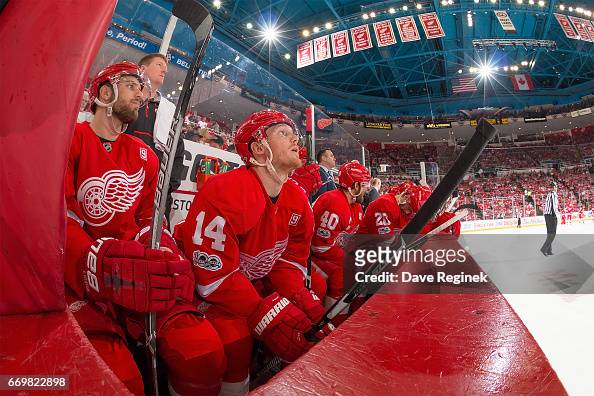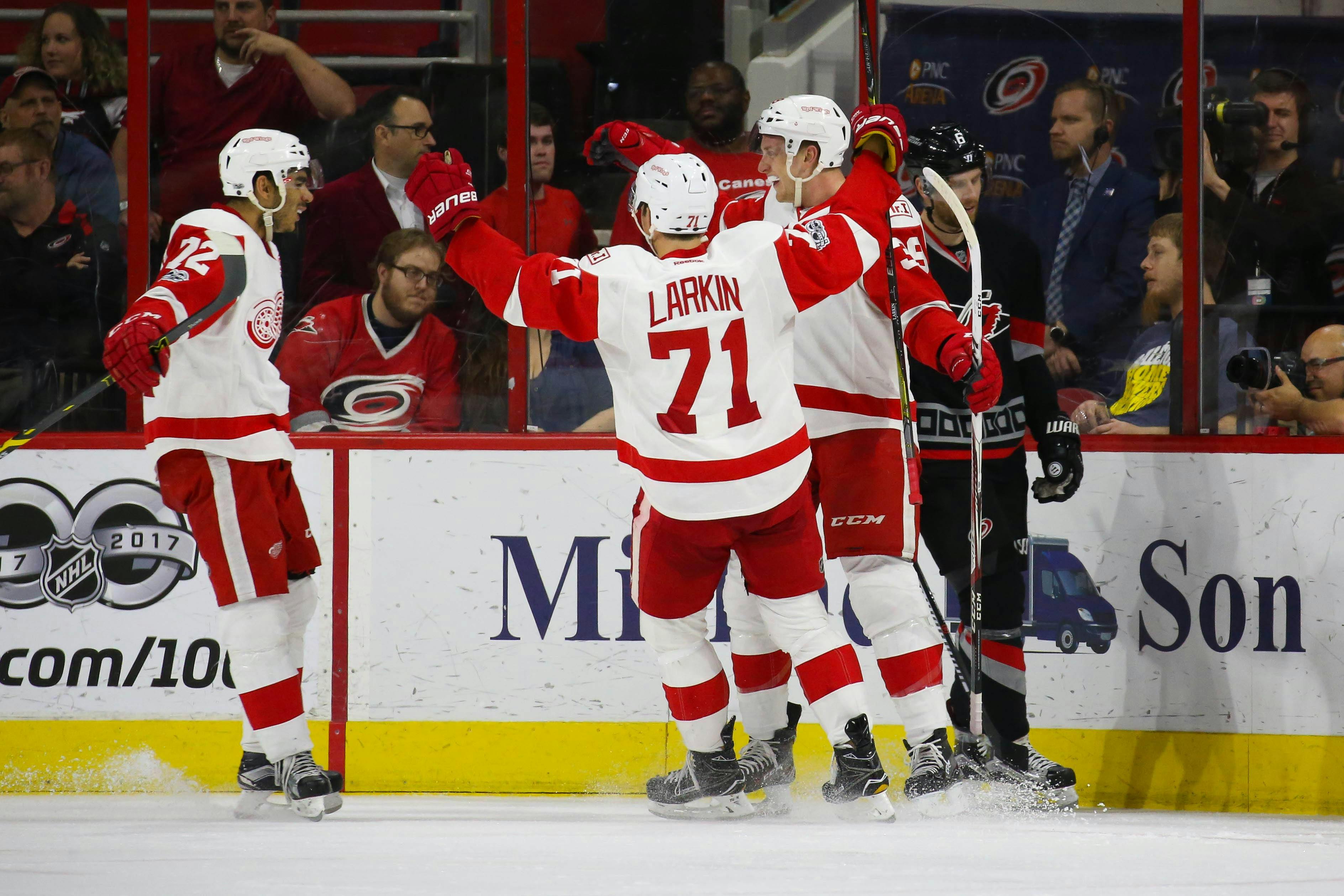The Red Wings have a grim outlook for the next few seasons. You’ve heard this before, but they have too many bad contracts to suddenly become a contender. There are some bright spots, however. They have a good, young core of forwards in Anthony Mantha, Dylan Larkin, and Andreas Athanasiou. They have promising top-4 defenseman prospects in Filip Hronek, Vili Saarijarvi, Dennis Cholowski, and Joe Hicketts. They also have a young, potential workhorse goalie in Petr Mrazek (although the team is reserved about giving him the reigns citing attitude issues and inconsistency as their main concerns – this reminds me too much of instances like P.K. Subban or Tyler Seguin for me to worry about him off the ice).
The Wing’s lack two positions of utmost importance on their team or in their pipeline, a true number one defenseman and number one center. Perhaps Dylan Larkin will still turn into the number one center we all hoped he would be just one year ago, but this past season showed that he may not be capable of driving a line as his playmaking ability is not on par with other number one centers across the league.
The list of less-than-stellar contracts goes as follows: Frans Nielsen at $5.25 million until 2022-23 (he is pretty good now, but those last 2-3 years are most likely going to be a bit of a struggle); Justin Abdelkader at $4.25 million until 2023-24; Darren Helm at $3.85 million until 2021-22; Luke Glendening at $1.8 million until 2021-22; Danny Dekeyser at $5 million until 2022-23 (although I think this contract would look much better in a second pairing role); Niklas Kronwall at $4.75 million until 2019-20 (I expect him to LTIRetire before his contract expires, also Kronwall’s contract was not bad at all when signed, injuries have just caught up to him so I don’t blame Ken Holland as much for this one); and Jonathan Ericsson at 4.25 million(!) until 2020-21.
The pattern here is that Holland signs role players to long term contracts far too often. Take a look at the back-to-back Stanley Cup Champion Pittsburgh Penguins. They do a really good job of signing just their star core to long-term deals, and then filling out the rest of their roster with players on shorter deals. Their only players that have contracts that extend past 2021-22 are Sidney Crosby, Evgeni Malkin, Phil Kessel, Kris Letang, and Olli Maata. Aside from Maata, the rest are the team’s elite core. In an NHL where 4th liners, 6th defenseman, and penalty killer specialists can normally be replaced by AHL talent or cheap free agents, the Red Wings should not be locking up Luke Glendening for just under $2 million.
With the above contracts in mind, an optimistic projection for when the Red Wings can begin to shape into a contender would be the 2021-22 season. By that time, all but Nielsen’s, Abdelkader’s, and Dekeyser’s contracts will be up. On October 1st of 2021, Dylan Larkin will be 25, Anthony Mantha and Andreas Athanasiou will be 27, and Evgeny Svechnikov will be 24. If these players can become top 6 forwards, the Wings’ would have a strong offensive core. A lack of defensive difference makers could be solved in one of three ways: the Wings use one of their young forwards to try and acquire a young, promising defenseman; they draft one in one of the next few drafts (next year’s draft looks to be very strong for defenseman); or one of their current prospects far exceeds expectations and turns into a top pairing pro.

DETROIT, MI – APRIL 09: Riley Sheahan #15, Gustav Nyquist #14 and Henrik Zetterberg #40 of the Detroit Red Wings watches the action from the bench against the New Jersey Devils during the final home game ever played at Joe Louis Arena on April 9, 2017 in Detroit, Michigan. The Wings defeated the Devils 4-1. (Photo by Dave Reginek/NHLI via Getty Images)
Teams no longer can build a winning team through free agency, they must be successful in the draft. The Red Wings’ would be wise to continue to trade players at the deadline if they are outside of the playoffs as expected. The more picks they acquire, the better chance they will have of building a strong prospect pool. They can also use those acquired picks to possibly move up in the draft if they locate a player they really like. Looking ahead to next season, three players stand out as possible deadline trading chips. Mike Green is on an expiring contract and could possibly fetch a first round pick. The more likely return, however, would probably look similar to what Brendan Smith was dealt for this past season (2nd round pick and 3rd round pick). A few teams inquired about Riley Sheahan last season. With a solid season this year, he could be worth a 2nd or a 3rd round pick to a team looking for center depth for a playoff run. He is going into his last season of his deal and will be a restricted free agent next offseason. The Wing’s may not be able to afford to re-sign him with Larkin, Mantha, and Mrazek (if he doesn’t walk out on the team) all up for new contracts that same offseason. Finally, with rumblings that he may be getting a one year contract due to arbitration this season, Tatar would be the Wings’ most valuable asset at the deadline. The Wings’ priority should be to keep Tatar and agree on a long-term deal, but if this is unable to be done, the starting point on a deal should be a first round pick as Tatar will be on a very movable contract.
Overall, if the Red Wings can wait out their bad contracts over the next 4 seasons while adding high end prospects to their pool (maybe don’t go into a draft with your number one priority being getting bigger), they can emerge as a young up and coming team in the mold of the 2015-16 Panthers or this past season’s Maple Leafs (although finding a Matthew’s level talent is very tough). In order for this to occur, Holland will have to abandon his track record of giving out loyalty contracts and avoid overpaying in free agency or the Wings should move on from their longtime GM.

